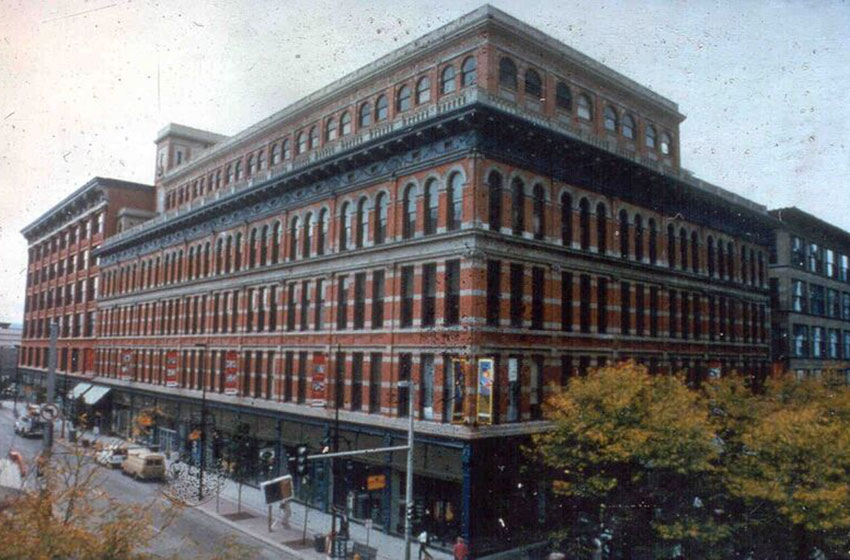Renovation of the historic Denver Dry Building into a mixed-use, mixed-income project with retail and office space, as well as residential units.
Constructed in 1889 and expanded in 1924, the Denver Dry Goods Building at the corner of 16th and California was the largest department store west of Chicago for much of the 20th Century. The building, designed by well-known architect Frank Edbrooke (who also designed the Brown Palace Hotel), was home to one of Denver’s premier retail stores for more than half a century and employed more than 1,200 workers in its heyday. Hampered by the flight of residents and retailers to the suburbs in the 1970s and 80s, the property was purchased by the May Company in March 1987 and closed its doors one month later. To save it from demolition, DURA acquired the building and issued an RFP for its redevelopment.
DURA partnered with the Affordable Housing Development Corporation in the redevelopment, providing $8.6 million in TIF bonds for the $48 million public/private financing, comprised of TIF, Historic and Low Income Housing Tax Credits, and a loan from the City’s Urban Development Action Grant (UDAG). Other partners in the complex development included the Affordable Housing Development Corporation (AHDC), BCORP Holdings, Inc. (BCORP), Colorado Historical Society, Colorado Housing and Finance Authority (CHFA), Federal National Mortgage Association (FNMA), Weitz-Cohen Construction, and a host of local and regional design, construction, and financing entities.
The project included affordable and market rate housing, office space, and retail shops which brought national retailers back to downtown for the first time in a decade. The result was a mixed-use, mixed-income, transit oriented development well before its time. Today, the Denver Dry Building includes 115,000 square feet of retail space, 28,700 square feet of office space, 66 for-sale residential units, and 51 rental units (39 affordable at 60% AMI). Retail occupants include TJ Maxx, Aveda Academy Denver, Starbucks, Jason’s Deli and others. Office users include Visit Denver: the Denver Metro Convention and Visitor’s Bureau and the Denver Urban Renewal Authority.
The new design maximizes energy conservation and aesthetic appeal — replacing 100-year-old glass with energy-efficient, double-pane glass, cooling the apartments with evaporative coolers and heating the building with Denver’s central steam system. The project won the 1994 Urban Economic Development Public/Private Partnership Award and the 1995 National Preservation Award from the National Trust for Historic Preservation.
At a time when lenders were hesitant to invest in downtown and concepts like mixed-use and mixed-income were new, redevelopment of the Denver Dry Building was a pioneering project that helped catalyze the preservation and revitalization of upper downtown. Since its completion in 1993, more than 20 historic buildings have been renovated using the Denver Dry’s mixed-use, mixed income model. DURA provided assistance with TIF financing for many of these projects, including Boston Lofts, Bank Lofts, Rio Grande and Mercantile Square. Taken together, they are a significant contribution to downtown’s economic and social vitality and the vision first laid out in the 1986 Downtown Area Plan.
